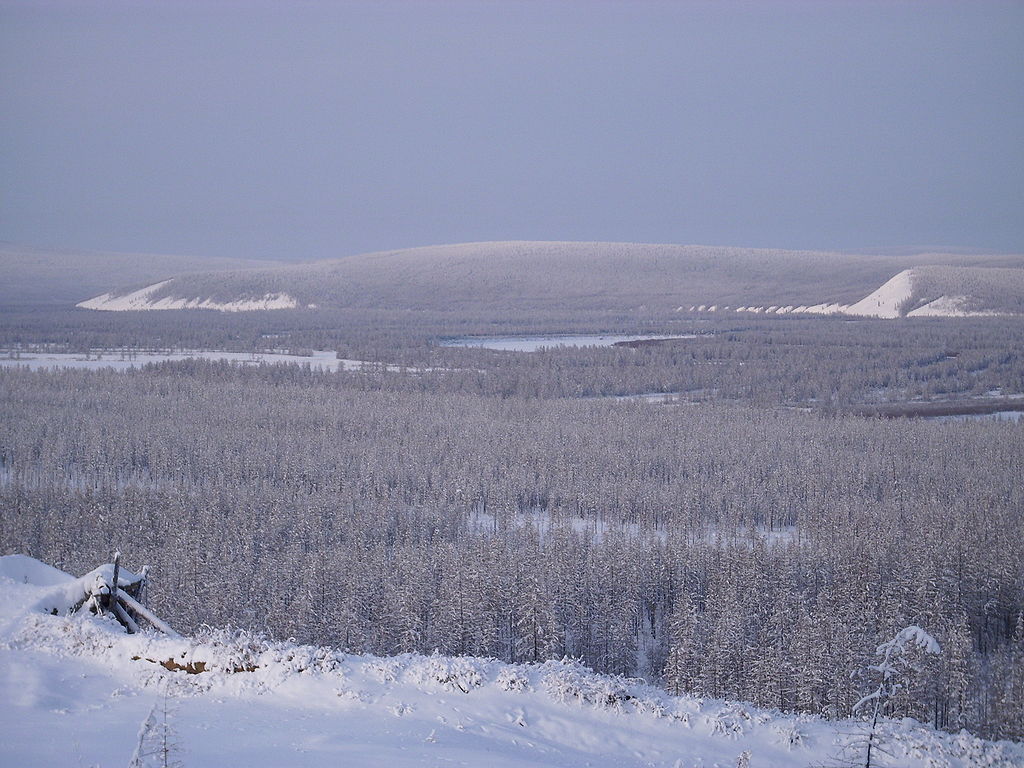Acostaal (aˈcostaˈil)
A geographic region encompassing most of western Ewas, Acostaal is defined by an average annual temperature at or below freezing, placing its northern boundary between 42 and 43 degrees South. The area comprises of mountains, taiga, tundra, and glacier.
Temperature variations are extreme. The southern regions in particular endure a short summer, lasting 1-3 months, during which time the sun does not set and temperatures may reach up to 30 °C. In the winter, the sun doesn't rise and temperatures drop as low as -60 °C. Outisde the snow forest, 70 kph winds have been recorded, and there is minimal rainfall.
The northern reaches are marginally less extreme, with summer highs only reaching 20 °C and winter lows of -20 °C.
The northern reaches are marginally less extreme, with summer highs only reaching 20 °C and winter lows of -20 °C.
Biodiversity
Biodiversity of both plans and animals in Acostaal is low, with less than one hundred species of mammal and bird and two hundred species of insect. Less than two thousand species of leafy plant, of which only a dozen are trees, have been recorded in the region. Most animals and plants live in the northern and central regions.Fauna
Beyond the extreme environmental conditions, Acostaal has a large population of predators and herbivorous megafauna that pose an imminent threat to life, including urus, wolf, skuh, cave- and foul bear, rock lion, moose, elk, mammoth, and Kjarint seal. Other wildlife include feral reindeer, rock grouse and ground partridge, hare, fox, lemming, lynx, several species of fur seal and penguin, and assorted seabirds. All of these species are hunted or farmed for their fur, feathers, meat, or eggs, with hunting, fishing, and trapping being the primary industries in the region.Flora
The lowlands of Acostaal are snow forest, populated by pine, larch, and spruce. Sheltered valleys may have small numbers of small-leafed trees such as birch or alder, and these trees have become symbolic of hope and shelter in the regional folklore. Berry-producing bushes and shrubs such as bloodberry, cloudberry, wild strawberry, and dogberry are common throughout the northern and central regions. Although very little vegetation grows above the first few hundred metres, Acostaal is the most densely forested region in ErwāParanatural
In addition to the mundane and semi-magical threats, Acostaal is an Unreal Place. Its uninhabited nature makes reality thin and many of its denizens would be incapable of existing in more populous regions. Paranatural creatures and phenomena include:- Ganðead: Those who die in Acostaal are rarely buried with rites. Their bodies continue to walk, seeking the warmth they lacked in their final hours.
- Hollowfolk: Hollowfolk are monsters in the shape of a person whose death is unknown to the observer, which attempt to enter settlements illicitly and kill and eat the inhabitants. Their ceaseless hunger is legendary, and they smell strongly of rotten wood when warm.
- Therianthropes: People infected with therianthropy. As the disease progresses, their body becomes more animal-like until they no longer resemble what they were before.
- Spirits and other minor deities: Acostaal is a place of pilgrimage, the Unreality and extreme danger of it allowing people to encounter their gods directly. In addition to gods, wood sprites, snow women, and ice giants are frequently reported by hunters.
- Restless mountains: The mountains of Acostaal change position and can be seen moving if observed for long enough.
- Dragons: Rumours of dragons are common in the region, but there have been no reliable sightings since 5.212
Population
Vast, bleak, and empty, Acostaal nonetheless contains three cities with populations averaging above 10,000 people: Lepla, Siunda, and Ekhna, all in the Kijarlean Empire. Lepla is a historic hunting town, with most inhabitants involved in service to some part of the fur trade. Downriver, Siunda is a trading town with a large migrant population. In summer, the population of the town doubles as the summer markets take place, attracting traders from as afar as Iasteron. Ekhna is in the far south, a self-sufficient walled city and the last known population of native Huswat speakers.History
The earliest evidence of permanent proto-yutaaq settlement in continental Ewas is on the western shore of Acostaal, near present-day Siunda. Worked stone and bone tools have been dated as far back as the Second Age.
Type
Region
Location under
Related Ethnicities
Contested By
Remove these ads. Join the Worldbuilders Guild




Comments